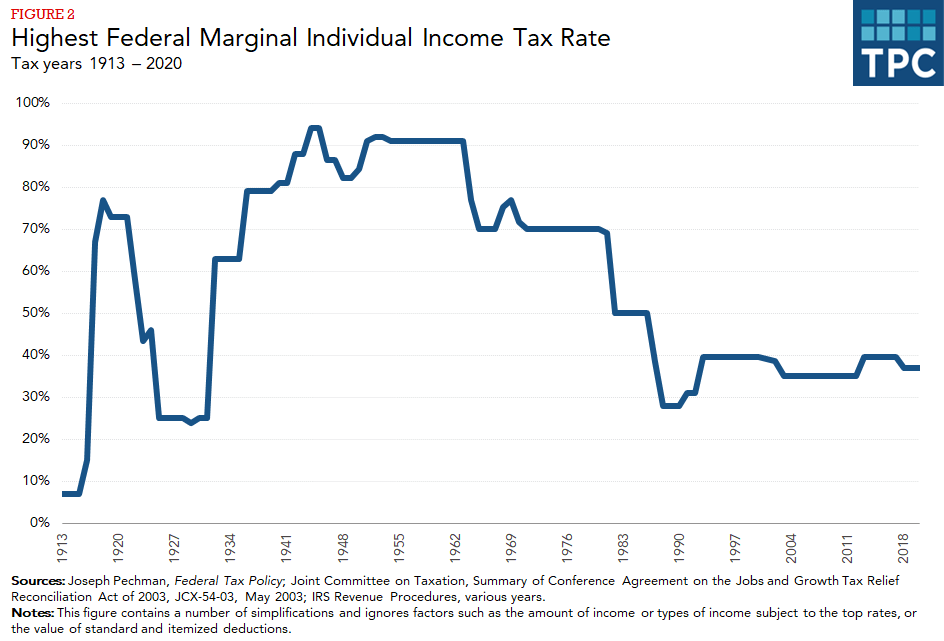It looks like you're new here. If you want to get involved, click one of these buttons!
Show your data as I've seen the exact opposite. The late 1920s income tax rates had a peak below 30% and we hit the Great Depression, during which the government started to raise taxes for New Deal social programs and the War Effort and we had strong economic growth after they did this. Then in the late 1940s and throughout the 1950s we had a peak tax rate of close to 90% and our economy was booming with many government projects, the GI bill, etc. Tax breaks on the wealthy have not proven to be an effective form of economic stimulus. Trickle down economics is hogwash. Reaganomics is widely known among serious economic circles to be an utter failure and Reagan himself quietly raised taxes to pay the bills.Everytime the taxes for the "wealthy" have went up three things have happened. 1) Economy slows down 2) Both the wealthy and the poor are hurt with the poor being hurt more 3) tax receipts go down.

I have bought about 15 CDs this past year from Schwab, that were non-callable, but I did not buy anything longer than 2 years. I just went on Schwab, and looked at their 3, 4, and 5 year CDs and it appears to be primarily non-callable CDs on their menu of offerings. I have no interest in callable CDs, have no intention of buying a callable CD in the future, so apparently I am not facing the same dilemma you are describing. Good luck!All of them are callable except some of the shorter term ones. Non-callable CDs tend to have much lower yields.
https://www.chicagotribune.com/news/ct-xpm-2001-01-09-0101090053-story.htmlWhen banks and brokerages began hawking callable CDs in the mid-1990s, interest rates were generally headed down, which meant that many issuing banks did indeed call their CDs after the first year.
© 2015 Mutual Fund Observer. All rights reserved.
© 2015 Mutual Fund Observer. All rights reserved. Powered by Vanilla